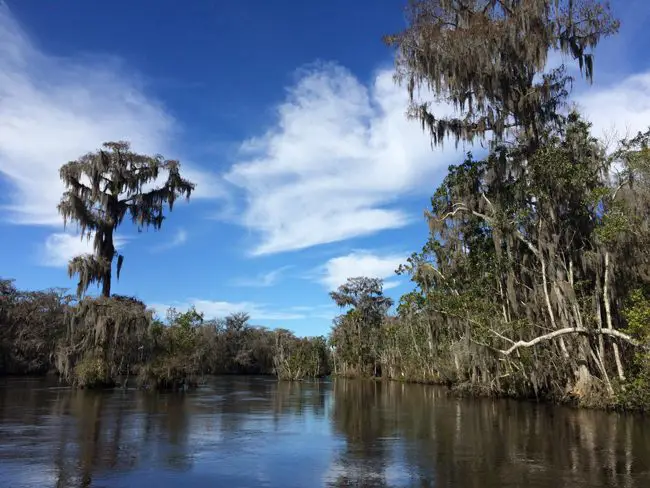
Gov. Rick Scott and the current members of the Florida Cabinet could be poised to make their largest outright purchase of land for preservation.
The $16.1 million purchase of 11,027 acres southeast of Tallahassee, if approved, would also be the largest acquisition of its kind for the state in more than a decade.
Scott and the Cabinet had been expected to take up the proposal during a meeting Tuesday, but the meeting was canceled Monday as officials dealt with the threat of Hurricane Matthew, according to the Cabinet website. The next scheduled Cabinet meeting is Oct. 25.
The land, known as Horn Spring Woods, contains 10 natural springs, has nearly 10 miles of meandering frontage along the St. Marks River and would help create an environmental corridor linking the St. Marks River Preserve State Park to the north, the Fanlew Preserve and Aucilla Wildlife Management Area to the east, and the Natural Bridge Battlefield Historic State Park to the south.
However, Scott and Cabinet members — Attorney General Pam Bondi, Chief Financial Officer Jeff Atwater and Agriculture Commissioner Adam Putnam — have not publicly indicated how they will vote on the proposal. That is a result of self-imposed rules following a dustup over the December 2014 ouster of former Florida Department of Law Enforcement Commissioner Gerald Bailey, whose abrupt departure drew questions about whether staff members had been improperly used as “conduits” for behind-the-scenes discussions.
“The governor’s top priority is the safety of the families and visitors in our state, ensuring the highest water quality standards and protecting Florida’s natural resources,” Scott spokeswoman Lauren Schenone said in an email Friday when asked if he would support the acquisition.
Bondi issued a statement saying, “It is always great to hear proposals that protect our state’s natural resources and I look forward to discussing this matter further in an open and public setting at the next Cabinet meeting.”
Putnam spokesman Aaron Keller said the commissioner “looks forward to discussing this matter at the public Cabinet meeting.”
Ashley Carr, a spokeswoman for Atwater, said, “We believe that the preservation (of) our land and natural resources is key to protecting the future of Florida, and we look forward to discussing this item.”
Money for the deal with Salt Lake City-based Natural Bridge Timberland, LLC would come through the Florida Forever conservation program.
As a number of Republicans in charge of the House and Senate have questioned the need for the state to acquire more land, Florida Forever doesn’t have nearly the funding it had before the recession, when the program received up to $300 million a year. Scott and the three current members of the Cabinet were all first elected in 2010.
Instead of outright land acquisitions, Scott and the Cabinet during the past couple of years have often favored purchasing what are known as “conservation easements,” which allow sellers to continue using land for ranching and other agricultural purposes while protecting it from development.
The deal would be the largest “fee simple” acquisition since the state spent $308 million for 67,618 acres of Babcock Ranch property in Southwest Florida in a deal completed in 2006.
The sales price on Horn Spring Woods is listed at 75 percent of the land’s appraised value, according to Cabinet records.
Natural Bridge Timberland bought the land in March 2014 for $13.67 million as part of a broader 300,000-acre deal.
George Willson, a board member with the Tall Timbers Research Station and Land Conservancy in Tallahassee, said the land has “beautiful sand hills, some of the largest cypress you’ll see anywhere off a major river, and a great springs assortment.”
“This is a really special place for Northwest Florida,” Willson said.
Rene Lewis, Cabinet affairs director for the Department of Environmental Protection, noted that the portion of the St. Marks River in Horn Spring is relatively shallow, which would allow “canoeing, kayaking, fishing and wildlife viewing.”
If acquired, the land would be overseen by the Florida Fish and Wildlife Conservation Commission and the Department of Environmental Protection’s Division of Recreation and Parks as an extension of the Natural Bridge Battlefield Historic State Park, Lewis said. The battle was the second largest in Florida during the Civil War.
–Jim Turner, News Service of Florida




























Leave a Reply